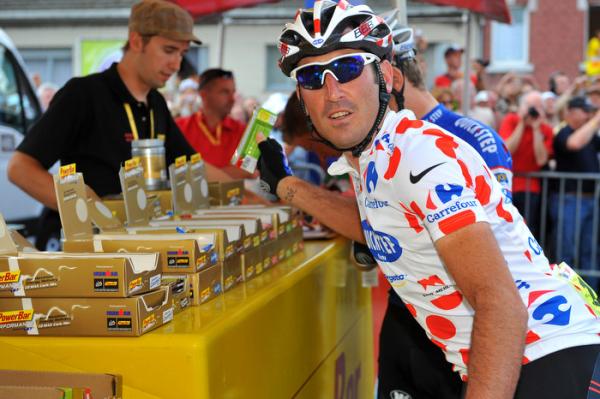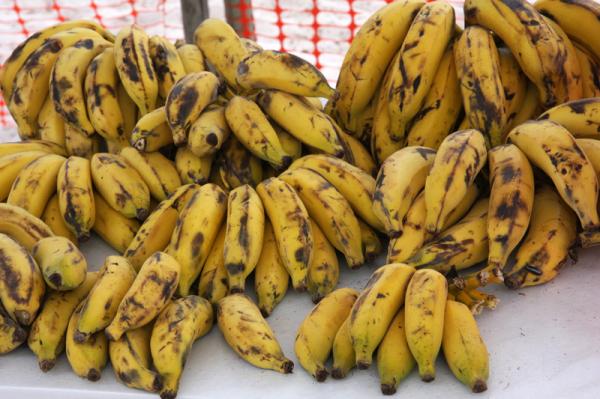Fitness: Step up to your riding weight
Correct eating and training habits the key


Achieving your optimal cycling weight will make you faster, and fitter. But what is it, asks Neil Pedoe, and how do you reach it?
Cyclingnews Fitness Q&A - December 14, 2010
Nutrition: Got enough on your plate?
Training: Get a post-ride plan
Training: Is lactic acid bad for you?
"Excess body weight is the cyclist's enemy," says Matt Fitzgerald, author of Racing Weight: How to get lean for peak performance. "It wastes energy, slows you down, affects performance and stresses joints."
You can't change your basic physiology such as height, limb length and even potential for leanness, but, says Fitzgerald, "You can reduce your weight to a level that is optimal for performance given those genetic constraints." You want to up your power-to-weight ratio by improving body composition through training and diet.
Fitzgerald warns against using body mass index (BMI), as touted by many doctors to gauge optimum body weight. "BMI charts are designed to identify unhealthy weights for the general population, based on a statistical susceptibility to disease," he says. "This is far too vague to identify ideal athletic weight," says Fitzgerald.
Instead, he says, lowering body fat percentage is the key, as it will increase your aerobic capacity because muscle has less competition from fat tissue for oxygen and fuel. (You can use widely available body fat scales).
1 - Diet quality
"If you only focus on one of the five steps to reaching your optimal weight, eating quality foods is the one," says Fitzgerald. The right foods will have the highest nutrient value, but will often also have the lowest calorie density too.
Get The Leadout Newsletter
The latest race content, interviews, features, reviews and expert buying guides, direct to your inbox!
Fitzgerald splits high quality foods into six categories: fruit; vegetables; lean proteins such as fish, meats that are 10 percent fat or less, nuts and seeds; whole grains; low fat dairy; and essential fats such as omega-6 and omega-3 fatty acids, the best source of which is fatty fish.
Low quality foods are grouped into five categories you should avoid: refined grains; sweets – including soft drinks, pastries and desserts that contain large amounts of refined sugar; all deep-fried foods; whole milk dairy produce and fatty proteins such as any meat with more than 10 percent fat.
2 - Balancing energy sources
Rather than strict proportional macronutrient diets, such as 60 percent carbohydrate, 20 percent fat and 20 percent protein, Fitzgerald advises a more measured approach. "It's not carbohydrate as a percentage of total calories you should worry about. Instead, match your carbohydrate intake to your training load while ensuring you still get adequate amounts of fat and protein and that the overall quality of the calorie sources is high."
3 - Timing nutrition
When you eat has a big impact on body composition, as it affects energy partitioning – how the calories are stored. "The key is to shift the balance of energy partitioning away from fat storage and towards muscle storage and immediate use," says Fitzgerald.
Eat early, eat often and before, during and after exercise. Eating early makes you less likely to over-eat in the afternoon and means you're more likely to eat higher quality calories. "Try to eat 25 per cent of your total daily calories within an hour of waking up," suggests Fitzgerald.
Eating often can boost metabolism and thus burn more calories. It also reduces appetite, helping to avoid over-eating at meal times. The ideal time to eat before a ride is two-to-four hours ahead, and you should include 100g of carbohydrate.
"Fuelling a ride will enhance your performance and help you burn more fat," says Fitzgerald. "It will also increase the number of food calories you burn and decrease the number you store." Fuelling with carbohydrate-based energy drinks and gels during a ride will help you get leaner for the same reasons.
Eating soon after exercise also promotes leanness because it shifts energy partitioning towards muscle protein and glycogen synthesis and away from body-fat storage.
4 - Managing appetite
Mindful eating is essential to cut out poor eating habits, such as emotional eating – because you're sad, happy or even bored; spontaneous eating – just because the food is there; unconscious eating – automatically finishing that packet of biscuits while watching TV; habitual eating – because it's a mealtime and not because you're hungry; and clearing your plate – portion sizes vary, so why shouldn't you leave some food if you are full?
Eat high-satiety foods that are filling and low calorie. "These include fibre, certain proteins, long-chain fatty acids and calcium," says Fitzgerald. Eat small portions of them as appetisers before meals to help manage your appetite. Soups, nuts and low fat yoghurt are good examples.
Counting calories helps you become more aware of your diet and establish good habits. Online tools such as www.trainingpeaks.com and weight loss websites are useful. "They don't have to be 100 percent accurate," says Fitzgerald, "just counting will increase dietary awareness and you will automatically eat better."
5 - Training right
There are two schools of thought about the best way to exercise yourself lean: high intensity interval training or prolonged moderate intensity exercise in the ‘fat-burning zone'.
"Both are effective for fat-burning," says Fitzgerald, "but the primary goal of most endurance athletes is to achieve maximum race performance, and getting lean is just one means to that end – so focusing on building exercise fitness is more reliable."
The fat-burning zone is typically between 59 and 64 percent of VO2 max in trained cyclists, and between 47 and 52 percent of VO2 max in unfit individuals. For both this level equates to a comfortable but not 'dawdling' conversational pace. "But," says Fitzgerald, "almost all cyclists could benefit from doing more moderate intensity miles as well as high intensity intervals."
6 - Weighs and measures
"What gets measured gets managed," says Fitzgerald – citing research by the Minneapolis Heart Research Institute which found that subjects lost an extra pound for every 11 days they weighed themselves during a weight-loss-through-dieting experiment.
To this end, Fitzgerald suggests keeping a diary of body weight, body-fat percentage, a food journal, and a calculation of calories burned per day. To calculate daily calories burned, add Base Metabolic Rate (BMR) calories to calories burned in non sport activities, plus workouts or rides.
BMR is how many calories you burn at rest and can be estimated using your height, weight, age and, for best accuracy, your body-fat percentage. There are many online resources for calculating BMR, but try www.calculator.org which uses the popular Harris-Benedict formula.
For an estimation of total calories burned, Fitzgerald suggests www.my-calorie-counter.com which calculates, for example, that an eight-hours-a-day desk job for a 68kg male will burn 984 calories a day.
"One weigh-in per week is adequate," says Fitzgerald, "but the minimum should be once every four weeks." On the same day, ride a set time-trial course or long hill climb and record your time along with your weight and body-fat percentage measurement. "These are your official weigh-in days," says Fitzgerald.